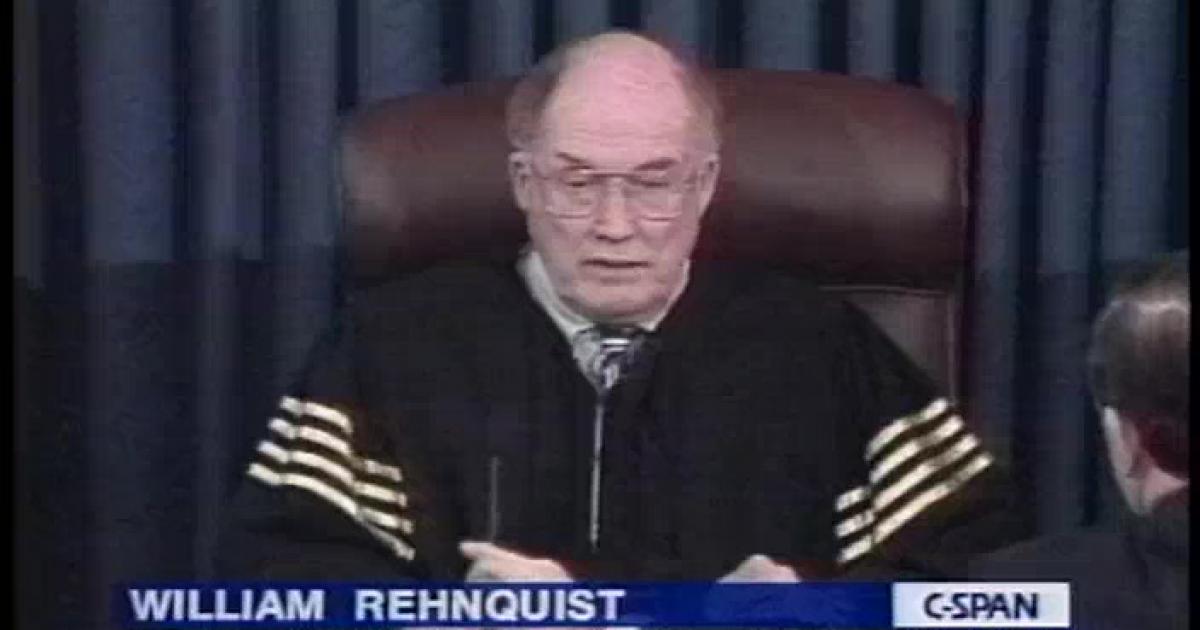Authors:
Historic Era: Era 10: Contemporary United States (1968 to the present)
Historic Theme:
Subject:
Winter 2019 | Volume 64, Issue 1


Authors:
Historic Era: Era 10: Contemporary United States (1968 to the present)
Historic Theme:
Subject:
Winter 2019 | Volume 64, Issue 1

Two decades ago, Americans were treated to a bizarre and dispiriting television spectacle when Chief Justice William Rehnquist convened a special session of the United States Senate. Decked out in his trademark black robes, with four gold-braid stripes sewed into each sleeve—a nod to the Gilbert and Sullivan operetta Iolanthe, which premiered in London in 1882—Rehnquist became only the second chief justice in American history to impanel the Senate as a jury in a presidential impeachment trial.
The question before that body was deceptively simple: Did President William J. Clinton commit high crimes and misdemeanors worthy of his removal from office?
Clinton’s troubles had begun more than five years earlier, when Attorney General Janet Reno appointed a special counsel to investigate improprieties the President might have committed in the 1970s, when he and his wife invested in a land development deal along the Whitewater River in Arkansas. In turning the matter over to a special counsel, Reno faced a double challenge. On one hand, the 1978 statute allowing for the appointment of independent prosecutors had expired, leaving her without formal rules about how to initiate an inquiry. On the other hand, she was a member of Bill Clinton’s cabinet; accordingly, she felt obliged to go the extra mile in removing any appearance of a partisan cover-up. So she tapped Robert Fisk—a former federal prosecutor and a Republican—to investigate the Whitewater affair.
Months later, however, Congress reauthorized the special-prosecutor statute, prompting Chief Justice Rehnquist to name a three-member panel of federal judges to appoint a new independent counsel. Their choice was Kenneth Starr, a former solicitor general in the Bush administration and a fierce political opponent of Clinton. At the time of his appointment as special prosecutor, Starr was serving as a legal adviser to Paula Jones, a former Arkansas state employee who was suing Clinton for civil damages related to an alleged case of sexual harassment dating back to 1991.

Democrats cried foul, arguing that there was nothing “independent” in Kenneth Starr’s record of partisan loathing for Clinton. But Starr remained on the job, and what came to be widely perceived as